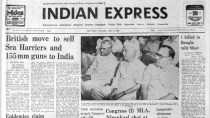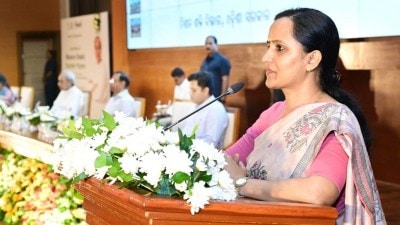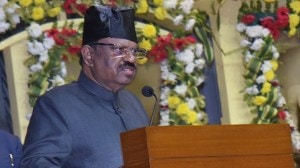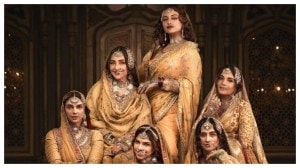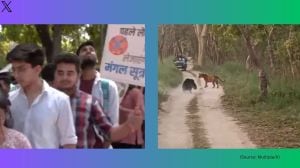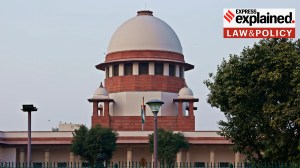- India
- International
The legacy of Kanshi Ram, the man who consolidated Dalit identity
Kanshi Ram brought a social revolution by giving the nation its first Dalit woman chief minister. His ideas are not restricted to one party
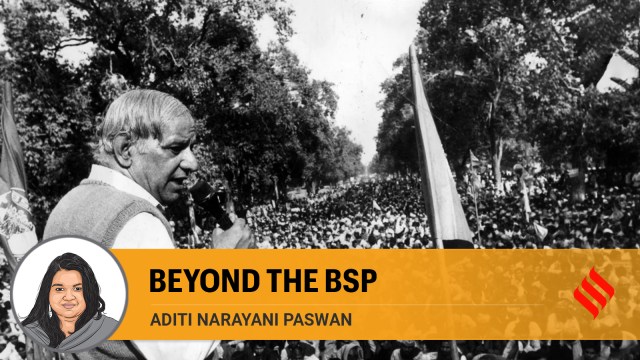 Kanshi Ram brought a social revolution by giving Bharat the first Dalit woman chief minister, Mayawati. His ideas are not restricted to one party. Dalits are not only fighting for their rights but for larger social integration.
Kanshi Ram brought a social revolution by giving Bharat the first Dalit woman chief minister, Mayawati. His ideas are not restricted to one party. Dalits are not only fighting for their rights but for larger social integration. From the changing dimensions of democratic politics to the Mandal Commission report, from economic liberalisation to the quest for Ram Mandir, the 1980s and ’90s were a vibrant time, marked by new economic, social, religious and political formations. This period also saw a transformation in Dalit politics with the arrival of the post-Ambedkar political discourse of assertion. It used the same social tools of caste, capital and consensus that had been the instruments of Dalit oppression.
This was the era of tall leaders like Ram Vilas Paswan and Kanshi Ram who were instrumental in bringing Dalits together as a bloc by cementing their political identity, cultivating their economic identity and re-asserting their social identity. Dalits were no longer seen as only Congress voters, under the broad umbrella of “Garibi Hatao, Desh Bachao”. They organised themselves into a much stronger bloc capable of sending leaders from their own fold. In modern India, Kanshi Ram stands out as the stalwart who shaped Dalit politics. He gave Dalits a voice and a vehicle for social empowerment, the All India Backward and Minority Communities Employees Federation (BAMCEF). Today, he is remembered as a charismatic gentleman, known for his simplicity and the art of sloganeering.
Kanshi Ram envisioned the furtherance of Dalit rights through economic empowerment. This paved the way for the establishment of BAMCEF. For him, empowered Dalits are economically independent, socially aware and spiritually awakened. This became the first cadre-based organisation of Dalits and other marginalised groups and aimed at establishing wider solidarity. It worked to raise awareness about the economic disparities faced by marginalised communities. By highlighting these issues and advocating for policies and programmes to address them, BAMCEF contributed to the conversation about economic empowerment. Kanshi Ram exhorted Dalit government employees to contribute 2 per cent of their income for the welfare of society — what he called, “Pay back to society”.
The intellectual section of BAMCEF consolidated Dalit political consciousness by focusing on the theme of “Ambedkarism — revival to survival” through rallies and conferences. Other segments of BAMCEF like Dattak Grahan (Adoption), BAMCEF (Cooperative) and BAMCEF Bhaichara (Brotherhood) contributed in other dimensions. For example, BAMCEF Dattak’s goal was rural welfare. This was done by adopting a few villages from a district and implementing government schemes there. BAMCEF Bhaichara aimed to bring together Dalits who migrated to urban areas with their rural counterparts. BAMCEF Sahkarita worked to encourage “creating one of the largest sections of consumers that do not possess capital, to create an economy of their own.”
With all these objectives, BAMCEF was given the nomenclature of “mission” by Kanshi Ram. The organisation had political, economic and social dimensions, in order to awaken Dalits and politically mobilise them for their welfare in democracy. This organisation went on to provide critical support to the BSP, whose major leaders came from the BAMCEF. But since BAMCEF members were government employees, Kanshi Ram formed the Dalit Shoshit Samaj Sangharsh Samiti on December 6, 1981, for political activities, and channelised this political force in favour of the BSP and Dalit identity politics.

Kanshi Ram emphasised that for Dalits, the solution must come from within the same fold. He insisted the fight was for Parity, not Charity. He also stressed that unless Dalits form part of the same social, political and economic system, they will not be able to help the larger cause of the community. His idea of Bahujan, which means “many” or “majority”, continues to form the bedrock for achieving larger ideals of samajik samrasta among different castes and communities on the Bharatiya Subcontinent.
Kanshi Ram brought a social revolution by giving Bharat the first Dalit woman chief minister, Mayawati. His ideas are not restricted to one party. Dalits are not only fighting for their rights but for larger social integration. We might vote en bloc but our identity as Dalits is now seen beyond a vote bank. We now sit on the shoulders of giants but look out for everyone in society.
The writer is assistant professor, Department of Sociology, Lakshmibai College, University of Delhi
EXPRESS OPINION
More Explained
May 03: Latest News
- 01
- 02
- 03
- 04
- 05


